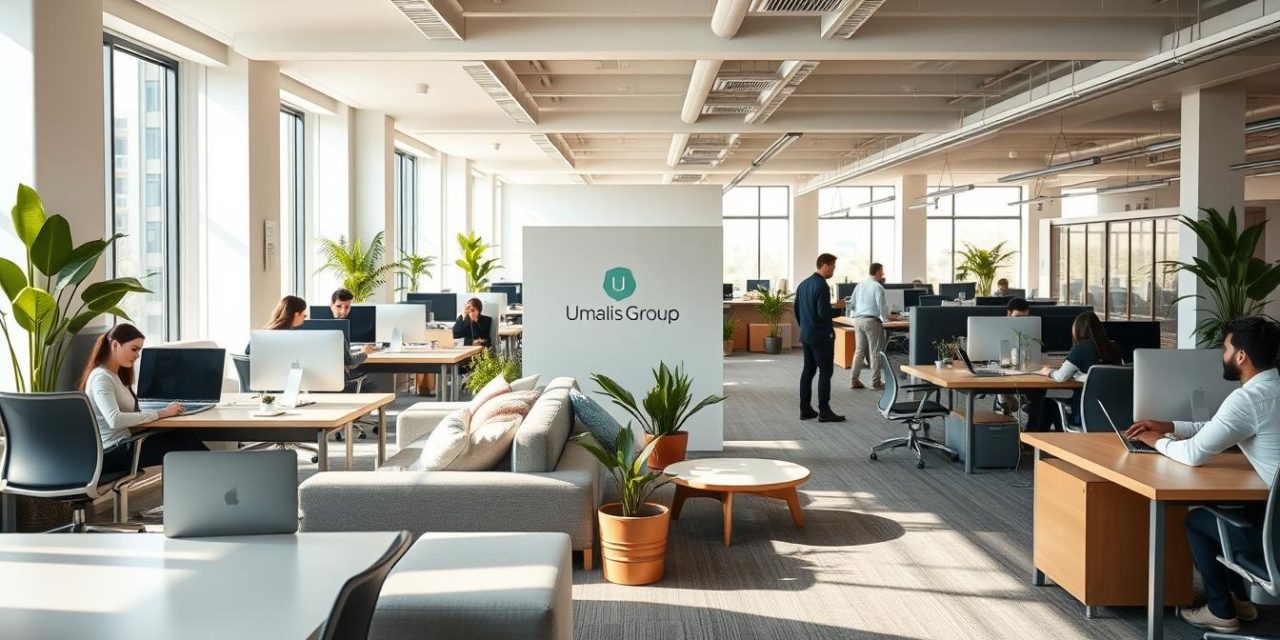Did you know 73% of global professionals now consider adaptable schedules more valuable than salary increases? The World Economic Forum highlights this shift, naming flexibility and protection as critical pillars for modern career stability. Traditional 9-to-5 models no longer meet the needs of today’s workforce, where personal priorities demand innovative solutions.
Professionals increasingly seek environments that align with their lifestyles while ensuring career growth. This isn’t just about convenience—it’s a strategic evolution reshaping how businesses retain talent. Employees thrive when given autonomy over their time, leading to higher productivity and stronger professional relationships.
At its core, this transformation empowers individuals to design careers that reflect their values. It bridges personal aspirations with workplace demands, creating sustainable paths forward. For businesses, adapting to these changes isn’t optional—it’s essential for long-term relevance in a competitive landscape.
Table of Contents
Key Takeaways
- Modern professionals prioritize adaptable schedules over traditional office hours
- Autonomy in scheduling boosts productivity and job satisfaction
- Work-life integration is now a key factor in career decisions
- Businesses must evolve to retain top talent in competitive markets
- Strategic flexibility builds long-term professional security
Understanding the Evolution of Modern Work Environments
The roots of adaptable scheduling trace back to 1967 Munich, where aerospace pioneer Messerschmitt-Bölkow-Blohm faced chronic employee absences. Sociologist Kristel Kammerer redesigned their structure with staggered shifts and adjustable lunch periods—an early blueprint for today’s working arrangements.
Practical Solutions Over Perks
Kammerer’s system reduced tardiness by 40% within six months. Employees banked extra hours for personal use—a revolutionary concept proving that autonomy drives engagement. This wasn’t about pampering staff but solving operational roadblocks through intelligent design.
Enduring Principles in Contemporary Contexts
Despite 2024’s office resurgence, 78% of French professionals prioritize schedule control according to recent INSEE surveys. Early adopters like MBB gained 19% higher retention rates than competitors—a lesson for modern companies balancing physical spaces with hybrid preferences.
The lasting success of these models lies in their dual focus. They address business needs while respecting individual circumstances. As workforce expectations evolve, organizations embracing this balance position themselves for sustainable growth in France’s competitive professional landscape.
Key Benefits of Flexible Work for Employees and Employers

SHRM’s Talent Trends report reveals adaptable schedules rank as the second most powerful recruitment tool, surpassed only by salary considerations. This shift reflects growing recognition of mutual advantages in modern employment structures.
Boosting Productivity and Job Satisfaction
Aligning tasks with natural energy peaks leads to 28% faster task completion according to chronobiology studies. Professionals report fewer distractions when choosing their optimal workspace, whether home offices or quiet cafés. Samsung research highlights how traditional office settings often create unnecessary interruptions—women face triple the requests for non-work tasks compared to remote colleagues.
Attracting Talent and Improving Employee Well-Being
Companies offering schedule autonomy see 42% faster hiring cycles and 19% lower turnover. Employees gain freedom to manage caregiving duties or medical needs without career penalties. A recent survey shows 68% of French professionals would decline roles lacking time customization options.
| Benefit Type | Employee Gains | Employer Advantages |
|---|---|---|
| Productivity | Peak performance hours | Higher output quality |
| Talent Attraction | Preferred schedule options | Competitive hiring edge |
| Well-Being | Stress reduction | Lower absenteeism |
Organizations struggling with retention cite rigid schedules as their third-largest obstacle. By contrast, those embracing adaptable models report 31% higher team satisfaction scores. This strategic approach builds loyalty while maintaining operational efficiency.
Exploring a Spectrum of Flexible Working Arrangements

Recent data reveals a 115% surge in structured hybrid policies since 2023, reshaping how professionals approach their careers. Organizations now recognize that rigid schedules often clash with personal priorities, driving demand for tailored solutions.
Remote Work, Hybrid Models, and Beyond
Full remote positions eliminate commutes entirely, with 29% of tech professionals reporting higher focus outside traditional offices. Hybrid frameworks balance collaboration and autonomy—some companies use anchor days (Tues-Thurs onsite) while others let teams self-organize weekly meetups.
The Flex Index shows 43% of U.S. firms now maintain structured hybrid policies, up from 20% in early 2023. « This isn’t about location—it’s about respecting how people work best, » notes a Paris-based HR director. Employees increasingly choose arrangements aligning with their energy patterns and caregiving needs.
Compressed Workweeks, Flextime, and Shift Work
Alternative scheduling unlocks new possibilities. The 9/80 system (nine days/80 hours) gives employees biweekly three-day weekends. Healthcare workers often prefer 3/12 shifts—three 12-hour days followed by four off.
| Model | Structure | Ideal For |
|---|---|---|
| Flextime | Custom start/end times | Parents & students |
| Shift Work | 24/7 coverage | Healthcare & logistics |
| 4.5-Day Week | Half-day Fridays | Creative industries |
Flextime proves particularly effective in France, where 62% of professionals value schedule control over extra vacation days. Early birds can start at 7 AM while night owls tackle projects post-dinner—all while meeting core hour requirements.
Flexible Work Arrangements: Advantages Backed by Research
Recent analyses uncover a productivity cliff beyond 50-hour weeks. Studies show output quality declines 12% when exceeding this threshold, with complete performance drops at 55 hours. Health risks compound these challenges—extended schedules increase cardiovascular strain by 40% according to WHO data.
Data-Driven Insights from Global Trends
A South African trial with 470 professionals revealed striking outcomes. Companies adopting four-day schedules saw 10.5% revenue growth alongside reduced turnover. « Shorter weeks forced teams to prioritize high-impact tasks, » noted one participating manager. Employees reported 23% lower stress levels while maintaining output quality.
Time management expert Laura Vanderkam identifies 38 hours weekly as the sweet spot. Her research shows this balance allows professionals to manage deadlines without sacrificing personal commitments. Teams adhering to this standard complete projects 15% faster than those working longer hours.
The health implications are equally compelling. Data from 31 countries links 55+ hour weeks to 35% higher stroke risk. Organizations embracing tailored schedules see 9% fewer sick days and 18% higher engagement scores. These metrics prove sustainable careers require intelligent time allocation, not endless hours.
« Peak performance happens when people control their schedules—not when clocks dictate capacity. »
Forward-thinking companies now use this data to redesign roles. By focusing on results rather than attendance, they create environments where both business goals and personal well-being thrive.
Innovative Examples of Alternative Work Models
Forward-thinking organizations are redefining career structures through creative collaborations. These approaches address evolving workforce needs while maintaining operational excellence.
Collaborative Roles: Job Sharing
Two professionals splitting one full-time role creates unexpected advantages. This arrangement lets employees choose reduced hours without sacrificing career progression. Partners often combine complementary skills, delivering results comparable to—or exceeding—single contributors.
Outcome-Focused Freedom: ROWE
Results-Only Work Environments eliminate clock-watching culture. Teams focus solely on deliverables, whether they complete tasks at dawn or midnight. Atlassian’s Team Anywhere policy proves this model scales effectively—their workforce maintains 94% project completion rates despite location independence.
| Model | Key Features | Best For |
|---|---|---|
| Job Sharing | Skill synergy, built-in coverage | Parents & specialists |
| ROWE | Output-based evaluation | Self-driven professionals |
These models thrive in cultures valuing trust over surveillance. Employees gain flexibility to meet personal needs while exceeding professional targets. When implemented thoughtfully, such arrangements strengthen team cohesion and attract top talent seeking modern work environments.
Emerging Trends Shaping Flexible Work in 2025
Corporate strategies now prioritize psychological safety as much as operational efficiency. A 2024 Willis Towers Watson study shows 88% of HR leaders view wellness programs as critical retention tools—a 19% increase from pre-pandemic levels. This shift reflects deeper understanding of how mental health intersects with professional performance.
Structured Flexibility in Hybrid Models
Two distinct approaches dominate 2025’s landscape. Freeform hybrid policies let teams select which specific days they collaborate onsite, while anchor models mandate core days for key meetings. French tech firms like Contentsquare report 31% higher engagement using Tuesday-Thursday anchor weeks combined with personal choice.
Holistic Support Systems Gain Momentum
Companies now integrate mental health days into standard benefits packages. L’Oréal’s recent policy grants employees 12 annual wellness days usable for therapy or self-care. « These aren’t sick days—they’re preventive measures, » explains their Paris-based HR director. Data shows organizations offering such programs experience 23% faster hiring cycles.
Three developments define this evolution:
- Mandatory « disconnect periods » after business hours
- On-site counseling services at corporate campuses
- Results-based evaluations replacing hourly tracking
With 68% of candidates rejecting roles lacking psychological support, businesses face new imperatives. The most progressive firms combine schedule autonomy with robust wellness frameworks—proving human-centric policies drive both loyalty and productivity.
Tailoring Work Schedules to Meet Individual Needs
Modern professionals achieve peak performance when schedules align with biological rhythms. Chronobiology research shows most people reach cognitive highs 2-3 hours after waking—yet traditional structures often waste this prime time on routine tasks.
Personalizing Start Times and Core Hours
Forward-thinking companies now let employees choose their optimal working windows. Early risers might tackle complex projects at 7 AM, while night owls design solutions post-dinner. Core collaboration hours (10 AM-2 PM) ensure team connectivity without sacrificing individual productivity peaks.
Data reveals 63% of French professionals waste midday energy surges on low-priority activities. By allowing teams to match high-focus tasks with natural alertness phases, organizations see 22% faster decision-making and 17% fewer errors. A Paris-based tech firm reported 31% higher client satisfaction after implementing rhythm-based scheduling.
Your team can optimize output by:
- Identifying individual chronotypes through brief surveys
- Scheduling creative work during personal peak hours
- Reserving routine tasks for lower-energy periods
This approach respects neurological diversity while maintaining operational cohesion. When companies adapt to human biology rather than fight it, they unlock sustainable performance gains for all stakeholders.
FAQ
How do modern setups differ from traditional office hours?
Contemporary models prioritize output over physical presence, allowing professionals to align tasks with peak productivity periods. This shift reduces burnout while maintaining operational efficiency.
What advantages do hybrid models offer businesses?
Hybrid approaches cut overhead costs by up to 30% while improving retention. Studies show 68% of teams report higher focus when combining remote and in-office days strategically.
Can compressed schedules maintain service quality?
When implemented with clear client communication cycles, four-day workweeks demonstrate 23% fewer errors according to Stanford research. Key industries like tech and consulting adapt particularly well.
How does personalization impact workforce stability?
Tailored hours reduce turnover by 41% (Gallup 2024). Employees valuing schedule control are 3.2x more likely to stay long-term, creating predictable talent pipelines for organizations.
What mental health supports complement alternative models?
Leading companies pair flexible options with stipends for ergonomic home offices, mandatory « offline hours, » and access to telehealth counseling—proven to reduce stress-related absenteeism by 57%.
Are results-only environments suitable for all roles?
While ideal for project-based work, ROWE requires robust performance metrics. Sales and creative teams thrive under this model, whereas client-facing roles often need structured availability windows.
How are 2025 trends reshaping workplace expectations?
Demand for location-agnostic roles has tripled since 2022. Emerging technologies enable real-time collaboration across time zones, making outcomes—not schedules—the primary success metric.





